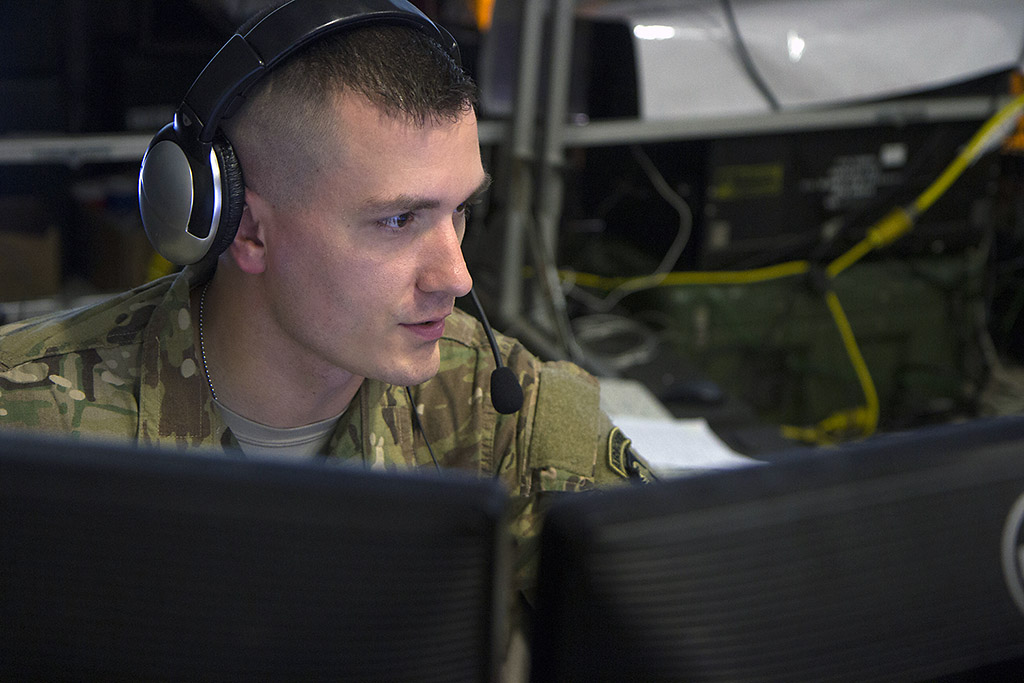Written by Sgt. William White
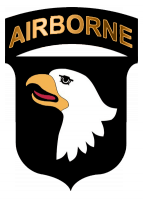 Fort Campbell, KY – The 101st Airborne Division (Air Assault) headquarters, along with other combat and support units, conducted an in-depth deployment simulation known as the Warfighter Exercise here November 12th-21st.
Fort Campbell, KY – The 101st Airborne Division (Air Assault) headquarters, along with other combat and support units, conducted an in-depth deployment simulation known as the Warfighter Exercise here November 12th-21st.
The WFX measures combat effectiveness of a headquarters asset, such as a division or corps, in working with subordinate units to execute a full-scale offensive against a modern and equipped enemy. It also gives them the opportunity to work with simulated government and aid organizations.
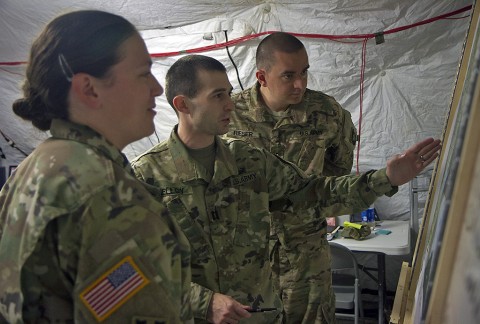
The exercise is comparable to a rotation at the National Training Center, Fort Irwin, California, or the Joint Readiness Training Center, Fort Polk, Louisiana, but differs in that there is no physical battlefield or “box” as it is commonly called, Donnell said. High-tech computer simulations replace physical maneuver units and challenge the higher commands’ ability to respond and coordinate with those simulations.
“It is an opportunity to work through our existing systems and refine and build new systems that help us to be more effective warfighters,” Donnell said. “We know that the United States is going to support its partners when they call on us to help … the underlining piece in this simulation is that a partner nation has asked us to help them fight an enemy that has invaded their country.”
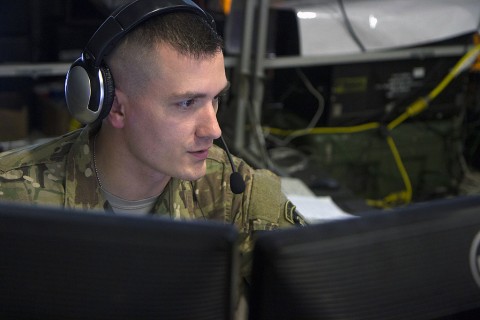
Donnell said battlefields have changed drastically over the past 20 years and U.S. warfighting capabilities are constantly adapting to those changes. He said it’s important that units of all types are getting the most up-to-date training, which is what the warfighter exercise brings.
“What we have to do as warfighters is constantly look at things from a fresh perspective so that we’re more effective up front but also more efficient at using our resources,” Donnell said.
Synchronizing unmanned aerial vehicle data with aviation and artillery assets is one way the 101st is assessing less risk for troops on the ground, while at the same time expanding combat capabilities, Donnell said.
Though many of those combined assets were simulated, some of the roles were filled by units the 101st has worked with before. The XVIII Airborne Corps and 25th Infantry Division worked alongside the 101st to create a realistic assembly of units. Donnell said having these role-players allows the 101st to get more realistic training than ever before.
In addition to the other units, the 101st was able to test their capabilities while working with National Guard Soldiers who are part of the Multi-Component Unit, or Detachment 1 in the 101st, who fill active-duty assignments.
Sgt. John Scheffler, an infantryman with Detachment 1, Headquarters and Headquarters Battalion, 101st Airborne Division (Air Assault), stepped into the role of battle noncommissioned officer during the exercise. His responsibility as battle NCO was to develop a common picture of the battlefield which helps commanders make decisions faster.
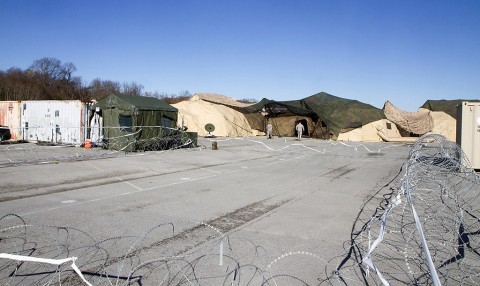
Scheffler said it’s important that everyone sees the same picture of the battlefield and he helps to ensure that picture is accurate.
“This common operating picture gives commanders the ability to see exactly where units are, friendly or enemy, in real time,” he said. “This also helps those units on the ground by directing assets quicker.”
Scheffler believes the exercise was an opportunity for the Guard Soldiers to demonstrate their capabilities while serving with an active-duty element.
“Through every metric, the MCU integrating with the division has clearly demonstrated that even as Guard Soldiers, we can seamlessly integrate into a unit and fulfill warfighting functions,” said Scheffler.
Milley said the 101st demonstrated what the U.S. military has to offer.
“You bring to bear the weight of America’s fighting power. What you did in this exercise is very timely. Take all the lessons learned and use them to get to the next level,” said Milley.
The 101st Airborne Division (Air Assault) headquarters is scheduled to deploy to Iraq and Kuwait with approximately 500 Soldiers for a nine-month rotation in early 2016 to support Operation Inherent Resolve.
The 101st will assume the role of Combined Joint Forces Land Component Command-Iraq, replacing the 82nd Airborne Division headquarters. In that role, the division headquarters will provide command and control of coalition troops training, advising, and assisting Iraqi Security Forces.

